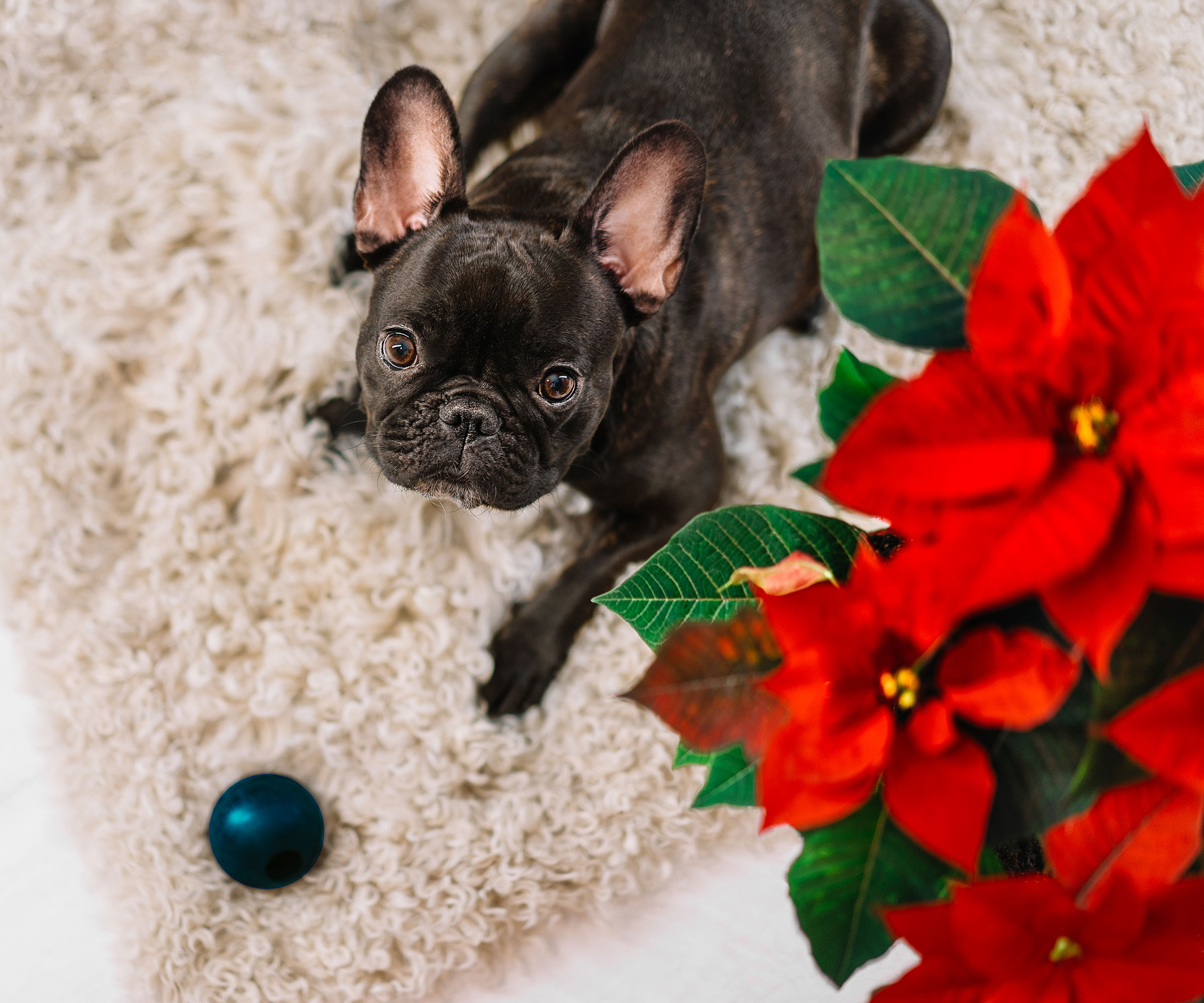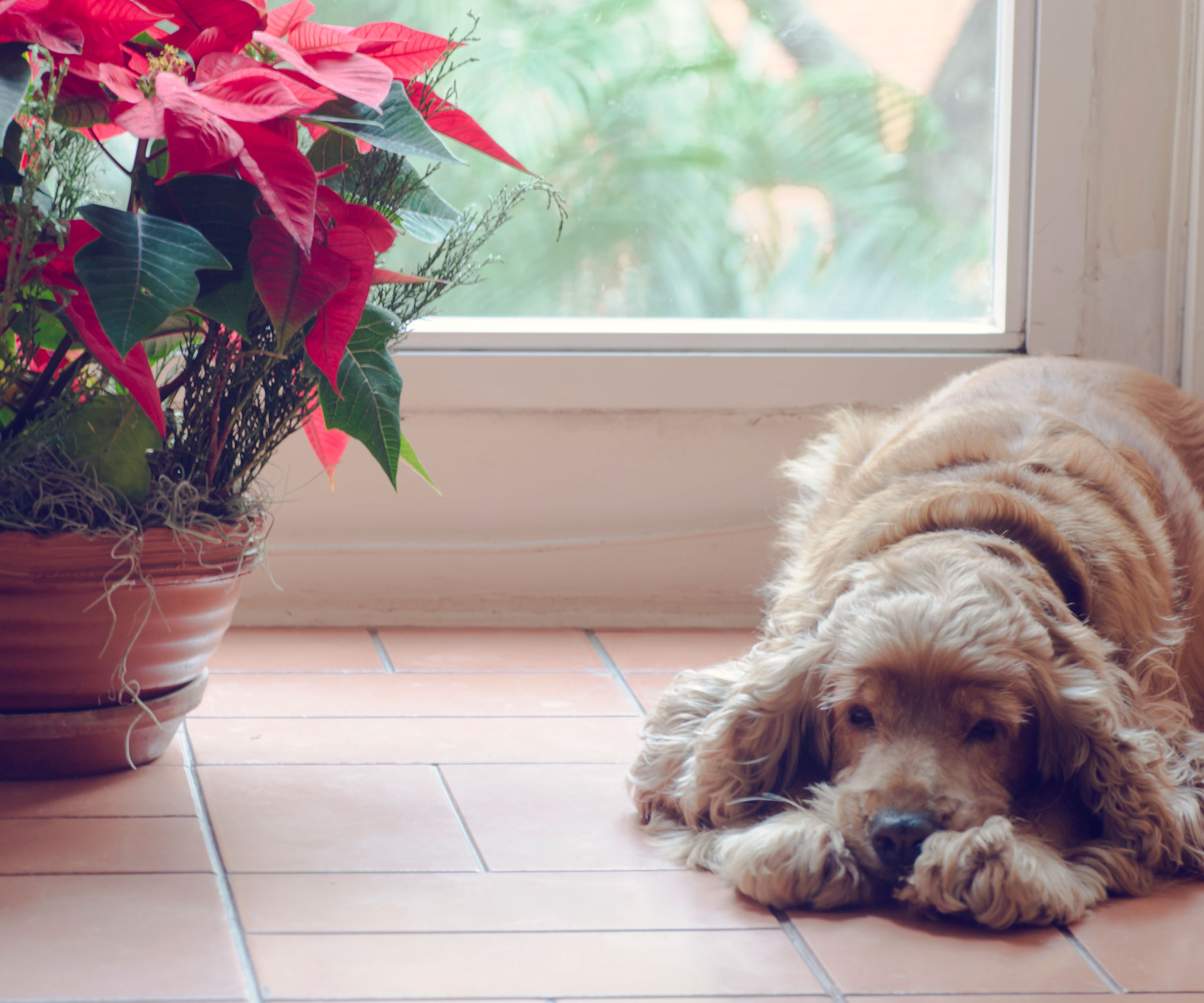Are Poinsettias Poisonous To Dogs? What You Need To Know To Keep Your Pooch Safe
You may adore their richly hued tones and textures, but are poinsettias poisonous to dogs? Don’t leave it to chance – we reveal how risky they are, and how to keep pets safe

Amy Draiss

Plant lovers often introduce seasonal color in the form of tropical bloomers like chrysanthemums, kalanchoe and poinsettias. Some are non-toxic, while others may be poisonous. Beloved as seasonal ornamentals, poinsettias are often kept as houseplants long after the holiday season ends. But if you have canine friends around you may well be wondering, are poinsettias poisonous to dogs?
If they do cause problems, what kinds of symptoms should you look for? And how do you keep your pooches out of trouble? Popular as these gorgeous plants are, the myths surrounding them can be confusing and misleading. So how dangerous are they, really? Keep reading to find out about potential poinsettia poisoning in dogs.
Are Poinsettias Toxic to Dogs?
Our fur babies are important family members and we do everything possible to keep them healthy and safe. Knowing what plants might be poisonous to them is imperative to their health. But it isn’t always easy, especially if you are growing plants like poinsettia as a houseplant for extended periods.
You might be so preoccupied with how to care for poinsettias during and beyond the holiday season that you forget about the inquisitive houseguests eyeing them up from a corner of the room. Pets are as curious as toddlers about new things brought into the home. Before you know it, they’ve taken a nibble or two.

Many pet owners have heard that poinsettias are poisonous to dogs and cats. But is this true? Not exactly. Poinsettias are members of the Euphorbia family. Many plants in this family do indeed contain a highly toxic latex, but in the case of poinsettias, it will likely only affect people with a latex allergy.
Does this mean Fido can munch on a poinsettia with impunity? Absolutely not. While the plant is not poisonous, it is toxic to pets and can cause gastrointestinal issues. So it’s best to keep this seasonal symbol of holiday cheer high up in a room and out of reach. A mantelpiece or tall bookcase is fine – on the floor is definitely more risky.
Signs of Poinsettia Poisoning in Dogs
It’s not always clear if your pooch has decided to get overly familiar with a poinsettia. You may notice signs of broken poinsettia stems, although that isn’t necessarily conclusive. But if your plant has recently experienced leaf drop, you might not always catch the fallen foliage before your doggy pal wanders by.
So what happens if your pet ingests parts of a poinsettia? Is a poinsettia poisonous to dogs only at a certain quantity? The milky sap (latex) which the plant contains can irritate their mouths and sometimes their stomachs. But they would have to ingest quite a bit to get an additional reaction like vomiting. Fortunately, poinsettias taste awful, so it is more likely that your pet’s curiosity will be sated after just a little nibble.
What to Do If Your Dog Eats a Poinsettia
If your dog eats some of the plant, try not to be alarmed. It may seem like a terrible mistake to make with your poinsettia, but it’s highly unlikely they ingested much of the plant. They’d rather have a dog treat or a carrot that tastes good. The best thing to do if your dog or cat eats part of a poinsettia is not to panic. Instead, keep a close eye on them. They may exhibit signs of an upset tummy and even vomit or have diarrhea. More likely, they may salivate excessively or drool.
Sign up for the Gardening Know How newsletter today and receive a free copy of our e-book "How to Grow Delicious Tomatoes".
Generally, these symptoms resolve themselves after a short period, but if you are still concerned after a few hours, reach out to your veterinarian.

How to Keep Dogs Safe Around Your Plant Babies
Just because poinsettias are off your holiday worry list doesn’t mean you should be complacent. There are other houseplants and winter-flowering plants that are poisonous to dogs and cats. Flowering amaryllis, peace lily, calla lily, lily of the valley and crocus are all a potential danger to pets.
Trees using balsam, cedar, holly, mistletoe or pine are also toxic to pets. Sometimes these and other toxic plants are included in floral or festive displays – a place we don’t always think of as a source of toxins. Just as worrying are the seasonal tree needles. Even the water from a cut Christmas tree is loaded with bacteria that can make your pets ill!
Common houseplants like dracaena are also toxic, so be aware of what is in your home, the same way you would if you had young children. Keep plants up out of reach, and do a little research before you introduce a new plant into the home.

Amy Grant has been gardening for 30 years and writing for 15. A professional chef and caterer, Amy's area of expertise is culinary gardening.
- Amy DraissDigital Community Manager